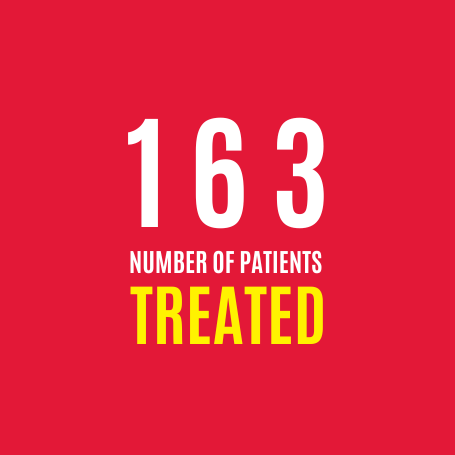12 Mar 2024

In the first month of 2024, our advanced trauma team – who operate every day of the year, 24/7 – attended to 163 patients.
These individuals were so critically injured they did not have time to get to hospital: our role is to bring the emergency department to the roadside.
In doing so, our specialist medics provided 25 rapid sequence intubations, 15 blood transfusions, two thoracotomies, one use of REBOA and more at the scene of the incident this month. Some of these life-saving procedures only our crew can do on scene in London.
We attend all the boroughs of the city, dispatched by one of our paramedics in the London Ambulance Service Emergency Operational Centre. In January 2024, the three most visited boroughs were Camden, Newham and Southwark.
A common misconception of our air ambulance service is that our main role is to ferry patients to hospital. In fact, most of the time, after our crew have stabilised the patient on scene, they accompany them to the nearest major trauma centre in a road ambulance. This month, 42 of our patients (39 per cent) were taken to The Royal London Hospital, 27 (25 per cent) to St Mary’s Hospital, 21 (19 per cent) to St George’s Hospital and 16 (15 per cent) to King’s College Hospital.
 Assault was the mechanism of injury to result in the most patients this month: 42 individuals (26 per cent). Transport-related injuries resulted in 31 patients (19 per cent), falls 26 (16 per cent), medical-related injuries 18 (11 per cent) and accidents 12 (seven per cent). There were also 34 patients (21 per cent) who had other or unknown mechanisms of injury.
Assault was the mechanism of injury to result in the most patients this month: 42 individuals (26 per cent). Transport-related injuries resulted in 31 patients (19 per cent), falls 26 (16 per cent), medical-related injuries 18 (11 per cent) and accidents 12 (seven per cent). There were also 34 patients (21 per cent) who had other or unknown mechanisms of injury.
We are there for the 10 million people who visit, live and work in London. But we are a charity, with 96 per cent of our funding reliant on public support. By September this year, we need to have raised an additional £15 million to replace our aging helicopter fleet. Can you help support us before it’s too late?

